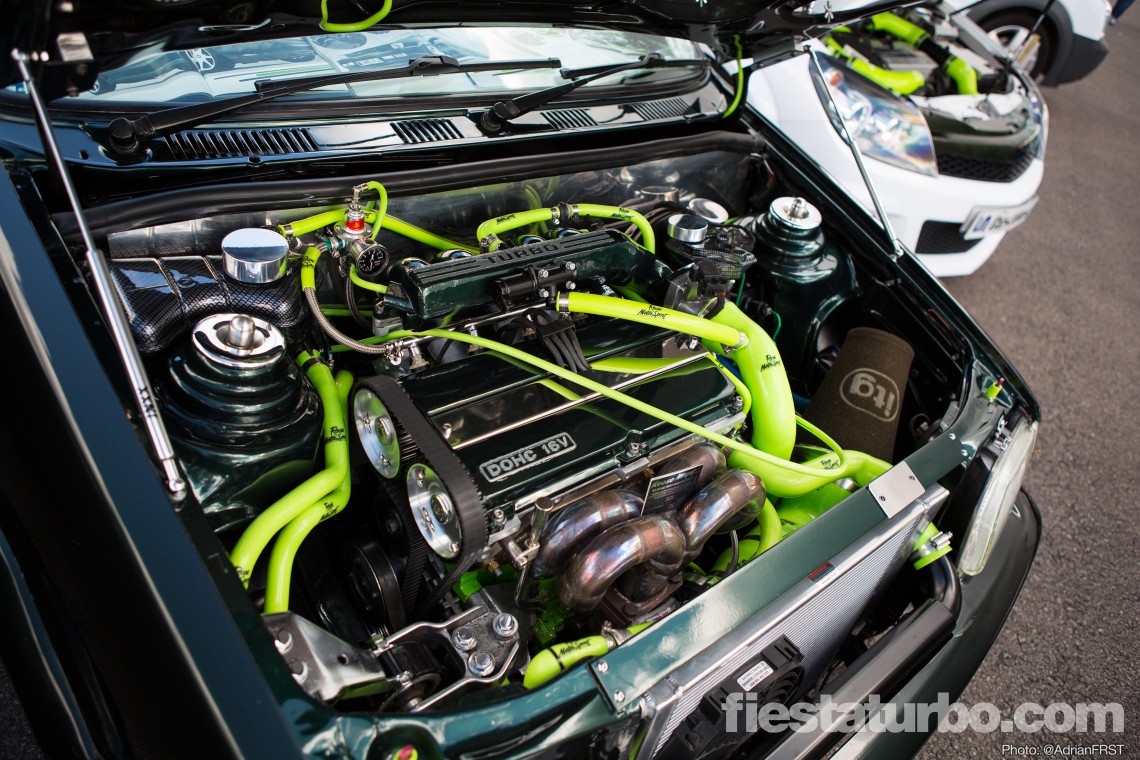Zetec History
Posted: 28th March 2003 | Author: @AdrianFRST | Photography: @AdrianFRST
The Ford CVH engine has been around for 20 odd years in one incarnation or another, and even the most recent Turbocharged EFI unit in the FRST is knocking on 13. In that time tuners have pushed the limits, extracting more and more power from it’s 1600cc with Hybrid turbos, big valve heads and wild cams. For years the CVH engined cars ruled the roost as the tuneable hot hatch to have. When Ford killed off the Escort and Fiesta RS Turbos in the early 1990s and the CVH engine deceased, it seemed that a golden era had come to an end. Gone were the blown hemisphericals and in there place we were offered quiet, refined, normally aspirated 16v engines. Designed for power these lumps seemingly offered very little tuning potential and the new RS range was disregarded as boring and uninspiring. Little did people know what these engines were capable of…
The Zetec engines were launched in 1992 and within a few years had become available in several displacements:
- 1.6 90ps (89bhp) - used in the Fiesta Si and Ghia and some Escorts.
- 1.8 105ps (104bhp) - used in the Fiesta XR2i 16v and some Escorts.
- 1.8 130ps (128bhp) - used in the Fiesta RS1800 and some Escorts. The difference in power output comes from different profile cams, a larger throttle body and a different ECU map.
- 2.0 130ps (128bhp) - only used in the Mondeo.
The Zetec was based on a strengthened CVH, with several key improvements - the most notable being the 16 valve head and twin cams. Improvements to the bottom end included a fully counterbalanced crank, larger capacity oil pump and on the 1.8 130ps and 2.0 models, oil jet sprays to provide under-piston cooling. There are three series’ of Zetecs, not counting the newer small capacity 1.25, 1.4, 1.6 and 1.7 Yamaha co-produced Zetec-SE units:
1992 Series 1 - distinguishable by the “DOHC 16v” lettering embossed on the cam cover. Early Series 1’s suffered from teething problems including sticking valves.
1995 Series 2 - distinguishable by “Zetec 16v” lettering embossed on the cam cover. Minor revisions to aleviate sticking valve problems. Also improvements to spark plugs, injectors, gaskets and cosmetics.
1998 Series 3 - the current model Zetec, as used in the Focus and Mondeo. A very different engine to the earlier Zetecs, both visually with it’s black plastic cam cover, and internally. Starting at the top, the Series 3 features new injectors - end fed unlike the side fed units on the S1 and S2, and with a twin jet spray pattern. Solid tappets with adjustment shims replaced the hydraulic predecessors and the cam belt timing tensioning setup has been revised. The pistons are teflon coated to reduce friction, and the bearing caps are on a single piece frame to increase strength. The water pump was of a new outboard design, with large vanes for improved flow. The block was strengthened - a larger amount of metal between the bores is clearly visible in comparison with the S1 and S2. The oil filter mounting became integral to the base of the block and the sump gained a windage tray and baffles to reduce oil surge. The sump’s webbing was also improved in an effort to combat block flex.
Fiesta compatability
The 1.6 and 1.8 Fiesta units are a direct fit, as you’d expect. The 2.0 Series 1 and 2 will fit, but require several modifications. The Series 3 requires new mounts fabricating, plus wiring loom modifications and re-routing of hoses.

Twitter
The second 20th Anniversary article, a dive into the history of how the site came about is available here: https://t.co/kbCfZ4sf0R
17:44, 4th December 2021 Twitter Web App
To celebrate https://t.co/wXVkvJipaS being 20 years old this year, I've written a series of articles detailing the… https://t.co/B0vE0Y3KvP
17:42, 4th December 2021 Twitter Web App
Follow fiestaturbo.com on Twitter:
http://twitter.com/fiestaturbo/
Facebook
New article! fiestaturbo.com is 20 years old this year and I'm writing a series delving into the history of it. …
Saturday, 4th December 2021 12:49
Some awesome Escorts from the Fair - FORD FAIR 2021: ESCORT EXHIBITION - …
Sunday, 31st October 2021 17:05
All the best Focuses from Ford Fair - FORD FAIR 2021: FOCUS PEEKING - Which was your …
Thursday, 7th October 2021 23:21
Become a fan:
http://www.facebook.com/fiestaturbo/
RSS Feeds
Subscribe to the RSS feed
What is RSS?
RSS is a technology that lets you use special applications or modern browsers to notify you you when a site is updated. You can then read the updated content in that application or your browser.
To subscribe to these RSS feeds you need to copy the links above. For instructions on how to add it to the feeds you keep track of, consult the documentation of your RSS reader.